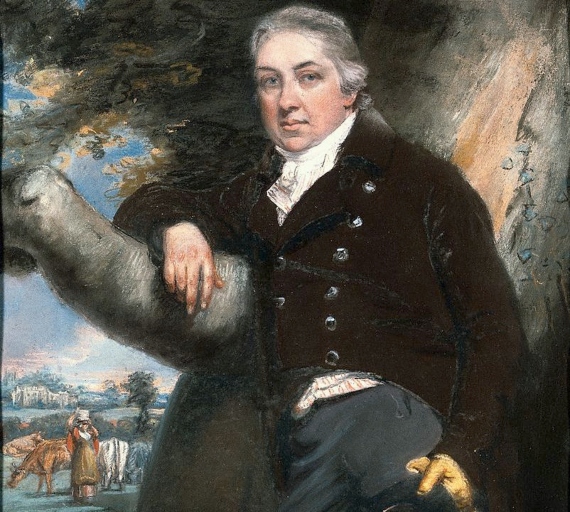There was once a television show on science and health that remained on air for almost the full 1980s decade in Spain and, what’s more, it achieved another feat: it managed to get many Spaniards to take their health seriously and to look after themselves a little better. While the idea of preventing rather than curing illness came from traditional Chinese medicine, the first person to use science to do so was the English physician Edward Jenner (17 May 1749 –26 January 1823), who in 1796 developed the first vaccine in history. He proved his success with a controversial experiment in which he injected James Phipps, an eight-year-old boy (the son of Jenner’s gardener), with pus from a smallpox patient.
At the time, smallpox was ravaging Europe, killing some 400,000 people annually. It preyed mainly on children, but it was no respecter of persons. One in three of those affected died —like France’s King Louis XV— and many survivors were left blind or scarred —like George Washington, the first president of the United States —scars left by a host of pus-filled bumps after they dried. But popular lore had it that milkmaids were immune to the disease, as were people who had already suffered from it before. In those days, in which there was widespread fear of being disfigured by smallpox, the smooth flawless faces of unscarred milkmaids turned them into an erotic myth, and they were even the protagonists of popular plays.
From the cuckoo’s trick to the mystery of milkmaids
As a child, Jenner had a passion for observing nature. His first scientific achievement was to discover how the cuckoo is able to get its chicks raised by birds of other species. He was also one of the first to study bird migration and to travel in a balloon, which he built himself. He was also a poet, musician and dinosaur fossil hunter. With such a résumé, Captain Cook was quick to offer him the position of naturalist on his second expedition, but fortunately for humanity Jenner turned down the job, focused on his studies and returned to his village as a family doctor. He was then confronted with the case of the milkmaids.

He observed that those who milked cows contracted cowpox, a much milder variant; they only got a few pustules on their hands, which healed in a matter of weeks. After that, they became actually protected against human smallpox. Jenner put the pieces together and on May 14th, 1796, he was confident enough in his theory to inject a child with material from a cowpox sore on a milkmaid’s hand. After young James recovered from cowpox, Jenner injected him again, but this time with the more dangerous human smallpox. The boy had no symptoms of the terrible disease; he was immunised.
An experiment unrepeatable today
Despite the success, Jenner wanted to repeat the experiment. He had to wait two years until he found another case of cowpox and only then did he publish the results of his tests, equivalent to today’s clinical trials. His is an example of scientific perseverance and method, but also of an audacity that led him to be thought mad 220 years ago and that today would have landed him behind bars for experimenting on a child. However, Jenner was not a reckless genius who came up with the idea of vaccination in a ‘Eureka moment’. Variolation, or the inoculation of smallpox scabs or pus into healthy people to protect them from what was then a terrible plague, was already being practised in his time. Sometimes variolation worked, but in other cases the outcome was fatal.
Other doctors had even come up with the idea of the vaccine earlier, but Jenner conducted the first extensive study of it, proved it worked with scientific evidence, and devised the first vaccination strategy. He had learned how to defeat smallpox, ahead of its arrival, and the news spread around the world along with the first vaccination campaigns in history. Mortality rates dropped rapidly and he won the respect even of England’s enemies: Napoleon went so far as to release two prisoners of war only because Jenner asked him to do so.
In Jenner’s papers about the vaccine he was already using the word virus, but it was not until a century later that started to understand what viruses were and why injecting harmless or weakened versions of these infectious particles caused the body to mount chemical defences, antibodies, that protect it from the malignant virus. Jenner led the way in immunology, as antibodies are also key in the treatment of allergies and AIDS, or in vaccines for yellow fever, influenza, tuberculosis and perhaps soon malaria. Smallpox continued to kill (over 300 million people in the 20th century) until all countries took vaccinations seriously. WHO declared the disease eradicated on 8 May 1980. At that time, in Spain, a TV show was taking its first steps: Más vale prevenir (“Prevention is better”).
Comments on this publication